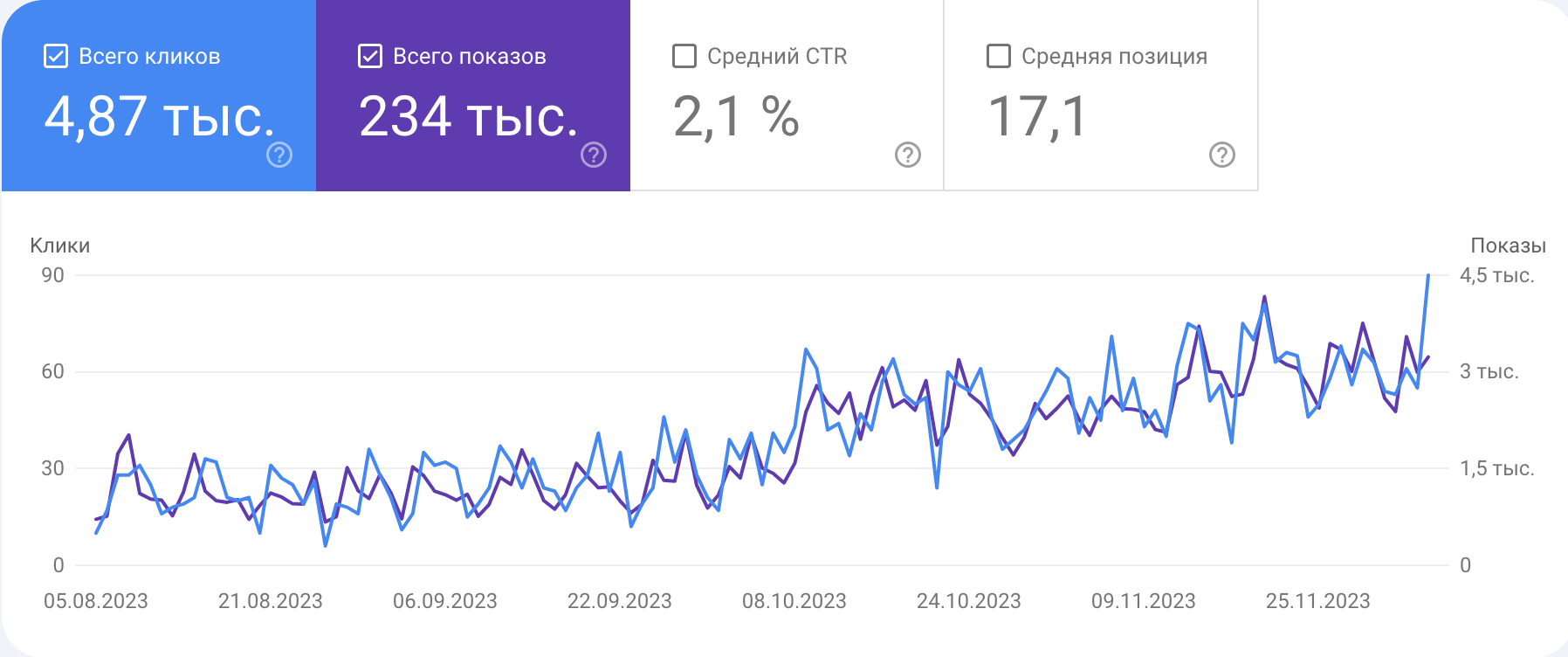Website SEO Cost Calculator
Request Free Consultation and Audit
Get an initial website review and consultation
Website SEO Promotion Cost Calculator
SEO promotion is not a one-size-fits-all service with a fixed price. The cost is determined by multiple factors: the technical condition of the website, content volume, niche competition, promotion strategy, and level of analytics. To objectively estimate a budget, these parameters must be considered. Below, we review the main sections that influence pricing and how the SEO calculator works.
1. Current Website Situation
Domain Age
Domain age affects the level of trust from search engines. Older websites have a longer history and often already have a link profile, whereas new websites require time to build authority. The calculator considers domain age as a base factor influencing the initial complexity of promotion.
Technical Website Condition
Before starting promotion, a technical SEO audit is conducted. This includes checking URL structure, duplicate pages, redirects, meta-tags, code errors, security, sitemap, and robots.txt. Detected issues may require additional work, increasing the budget.
Search Engine Indexing
Poor website indexing indicates technical obstacles or low content quality. Improving indexing requires extra work: removing barriers, adjusting the sitemap, and enhancing page quality. This directly affects the initial workload.
Presence of Penalties or Filters
If the website was previously penalized by Google or Yandex, recovery can take significant time. Recovery activities include cleaning the link profile, rewriting content, and improving user behavior metrics. The calculator accounts for such cases as a separate scenario with a higher budget.
Page Speed, Responsiveness, URL Structure
Slow loading, lack of mobile responsiveness, and chaotic URL structure are major obstacles for SEO. Fixing them requires developer and UX specialist involvement, which increases costs.
CMS and Its SEO Capabilities
Content management systems differ in SEO capabilities. Some platforms (e.g., WordPress) allow easy optimization, while custom or limited SaaS platforms may require deep adjustments. CMS type is considered in budget calculation.
2. Scope and Complexity of Work
Number of Pages to Optimize
The more pages require SEO optimization, the higher the workload. This includes creating unique meta-tags, technical optimization, content adaptation, and internal linking. The calculator scales the budget based on the number of target pages.
Multilingual and Multiregional Features
If the website is available in multiple languages or targets different regions, implementing hreflang, creating unique content, and setting up geotargeting is necessary. These tasks significantly increase work volume and cost.
Content Volume
SEO requires regular content updates aligned with user queries. This includes articles, product and category descriptions, and blog posts. The more content required, the higher the promotion cost.
E-commerce Functionality
Online stores need special attention: filters, product pages, navigation, and category optimization. This increases the number of pages, requires thoughtful architecture and quality content, influencing the final estimate.
3. Niche and Competition Level
Niche Complexity
Some niches — such as healthcare, finance, and law — have high competition. This requires more content, links, and effort to achieve results. The calculator considers niche complexity in budget estimation.
Promotion Geography
Local promotion within a city requires one level of resources, regional another, and international a higher level. The broader the geography, the higher the competition and workload.
Seasonality
Some businesses depend on seasonality — e.g., tourism, gifts, agriculture. This affects promotion strategy: preparation for peak periods is necessary. The calculator can account for seasonality as a correction factor.
Cost and Volume of Target Queries
Query frequency determines the promotion scale. High-frequency queries require more effort but can bring significant traffic. Medium- and low-frequency queries are easier to rank for but require a larger number of queries.
4. Promotion Plan
Chosen Strategy
A basic strategy includes only SEO optimization. Advanced strategies may include content marketing, crowd marketing, SERM, and digital PR. The more comprehensive the approach, the higher the cost but also the effectiveness.
Client-side SEO Specialist
If the client handles part of the tasks (e.g., keyword collection, implementing changes), the total project cost may be lower. The calculator accounts for this as a budget optimization factor.
Reporting Frequency
Standard reporting is monthly. Weekly analytics or detailed reports on competition, conversion, and user behavior can also be selected. Higher detail and frequency increase support costs.
Time to First Results
If fast results are needed, the strategy requires accelerated work: more links, more content, a larger team. This increases workload and cost.
5. Link Building
Link Budget
Purchasing external links is important but costly. Quality platforms require significant investment. Depending on competition and niche, from a few to hundreds of links may be needed monthly. The calculator allows setting an approximate budget.
Quality and Topic of Donors
Links from relevant resources are more effective. The calculator considers link types: permanent, temporary, crowd links, PR publications. The higher the quality of donors, the more expensive promotion becomes.
Need for PR and Crowd Marketing
For brands and new projects, creating a positive presence is important: media publications, reviews, forum comments. This requires additional budget and is listed as a separate expense.
6. Analytics and Support
Analytics Setup
Setting up Google Analytics 4, goals, events, UTM tags, and end-to-end analytics is essential. Without accurate data, measuring promotion effectiveness is impossible. This is included in the base budget.
Position and User Behavior Monitoring
Continuous monitoring of rankings, traffic sources, and user behavior allows timely adjustments. Webmaster panels, analytics systems, heatmaps, scroll and click maps are used.
Competitor and Demand Analysis
Understanding competitors’ strategies, the queries bringing traffic, and targeted pages is key for a successful strategy. This analysis is part of the advanced package and increases the project cost.
Conclusion
SEO promotion is a long-term investment in website growth. Costs depend on dozens of factors, and there is no universal formula. The SEO calculator helps estimate a budget and select the appropriate service format. For an accurate estimate, an individual consultation with an SEO specialist, competitor analysis, and a strategic plan are required.




